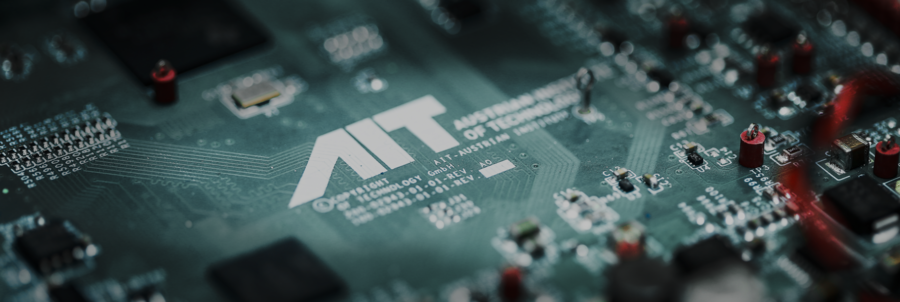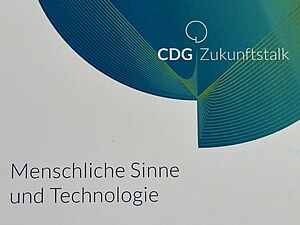Many people take seeing, hearing, feeling and smelling for granted. However, there are a lot of people whose senses are impaired. There are currently around 1.7 million people in Austria. But there are more and more ways to help these people with the help of new technologies. Assistance systems, machines, devices and computers are increasingly supporting people in their sensory perception. The question is: To what extent are these ‘artificial’ aids actually a substitute for the senses and what role do technologies play today and in the future?
‘In principle, we want to create synergies between humans and machines - in other words, we need to understand the senses,’ said Manfred Tscheligi at the beginning. ‘Human-computer interaction research is about understanding people in all their aspects - only then can we develop appropriate technologies that are usable, beneficial and enjoyable.’ He mentioned two aspects: On the one hand, the concept of ‘augmented human’. This means that ‘people are augmented by technology, and the technology becomes part of the people themselves.’ The second aspect Tscheligi mentioned was ‘multisensory experiences’: through multisensory experiences (seeing, feeling, hearing, smelling), for example, all the human senses are also addressed in extended reality (XR). XR not only opens up a new visual experience for people, but also an immersive dive into simulated worlds - there are several research projects on this at AIT and also a lot of interest from industry, for example on the subject of training and occupational safety.
Grasping and feeling with an ‘artificial’ hand
Surgeon Oskar Aszmann, former head of the CD Laboratory for the Restoration of Extreme Functions and deputy head of the University Clinic for Plastic, Reconstructive and Aesthetic Surgery at Vienna General Hospital, said: ‘We have made extreme progress, the techniques and areas of application have expanded enormously.’ Aszmann described in detail how it is now possible to provide people with a bionic hand or arm prosthesis, giving them the opportunity to touch and feel things again. The basis for this is extensive knowledge in nerve surgery: ‘The brain first has to learn that the prosthesis or new hand has to do something,’ explained Aszmann.
New hearing experience with MED-EL
Equally fascinating was the presentation by Wolfgang Fischler, Head of Strategic Cooperations at Innsbruck-based company MED-EL, who explained how cochlear inner ear implants help deaf people to hear again. ‘The good thing about it is that people are incredibly capable of learning. When a signal is offered, people are able to filter out the information from the signal,’ said Fischler and then went on to talk about the progress made in research at MED-EL: ’The signal that we are developing is now so good that it comes very close to the natural signal and hearing.’
NOSI has developed the ‘digital nose’
Johannes Bintinger, who worked at AIT for many years and is now co-founder of NOSI and Ass. Prof. for Theranostic Chemistry at the Vienna University of Technology, reported on the ‘digital nose’ and the idea that mobile phones should learn to smell: NOSI stands for Network for Olfactory System Intelligence. To develop this idea, you need to know how human olfaction works. Building on this knowledge, the researchers developed sensors and ‘the digital nose has to be trained with the help of artificial intelligence’, as Bintinger explained. There are many possible applications for NOSI, such as recognising whether food is spoiled, in food production, in the hotel industry, but also in the health and care sectors.
To summarise: many things are already possible today: we have truly entered a new era of perception in the 21st century. Technologies can help many people achieve a new sensory perception. ‘But the gold standard is nature,’ summarised Wolfgang Fischler.
Christian Doppler Research Association
Click here to see: https://www.youtube.com/watch?v=Lt-flwwo2rw (in German)



